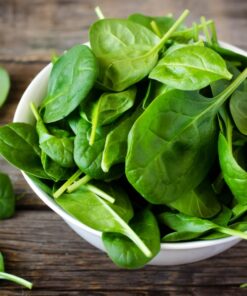Bhut jolokia seeds (GHOST PEPPER ) pack of 20 seeds
₹80.00
In stock
Bhut jolokia seeds What to consider when growing chilli plants
Bhut jolokia seeds Hot To ensure a reliable crop, chillies need a warm, sunny position outside or they can be grown in a glasshouse or covered structure. Very hot chilli varieties definitely grow better under cover, as this helps develop the intense heat, taste and flavour.
Bhut jolokia seeds Hot Although they can be grown in well-prepared, moisture-retentive soil, they usually crop better and more reliably if grown in pots. Their close relatives capsicums or sweet peppers, on the other hand, do better grown in the vegetable patch.
Bhut jolokia seeds Gradually harden off the plants for 10-14 days before planting outside.
- Soak chilli seeds overnight in warm water before planting OR gently sandwich between a damp paper towel, place in a plastic bag and leave in a warm position for a couple of days to improve germination.
- Chilli seeds love hot weather so if you don’t have a heated glasshouse handy, grow them in a pot on the kitchen window sill for a bit of extra warmth.
- Sow chilli seeds as early as possible (late winter for the hot varieties).
- Sow seeds in small and very shallow pots (about 5mm deep). Transfer to a larger pot when two leaves have developed, try not to touch the forming roots when re-potting to prevent accidental damage.
- Bhut jolokia seeds Water regularly but don’t allow the soil to become too moist. Cover the seed tray with perlite to aid moisture and heat retention, both of which the chilli seeds love.
- If seedlings are to be planted outside in the garden, gradually harden them off for 14 days (leave outside during the day and bring in overnight).
- Chilli Red Hot Feed with a vegetable fertiliser as instructed on the label.
- Make sure you consider the following when growing and caring for your chilli plants:
- Bhut jolokia seeds like growing in situations where the temperature can be easily regulated. If growing outside, select a sunny, sheltered, well drained position. If growing inside, a sunny window sill or conservatory is perfect. Just remember – don’t let the soil dry out.
- Seedlings are ready to put into their permanent cropping position once the roots fill the small propagating pots. Move them up into 20cm- pots of superior potting mix in late September or October if growing in a glasshouse), or late October if growing outside.
- Pinch out the growing tip when plants reach about 15-20cm high to encourage bushy growth and better cropping. You can also pinch back the sideshoots if lots of smaller chillies are preferred.
Be the first to review “Bhut jolokia seeds (GHOST PEPPER ) pack of 20 seeds” Cancel reply
You must be logged in to post a review.












Reviews
There are no reviews yet.